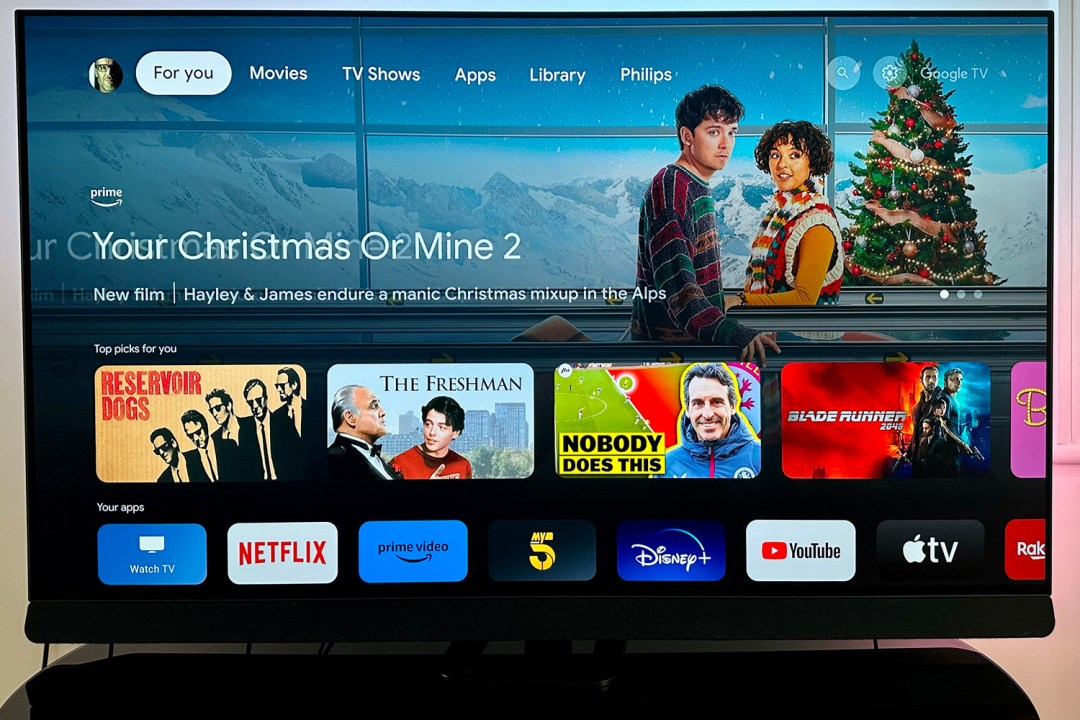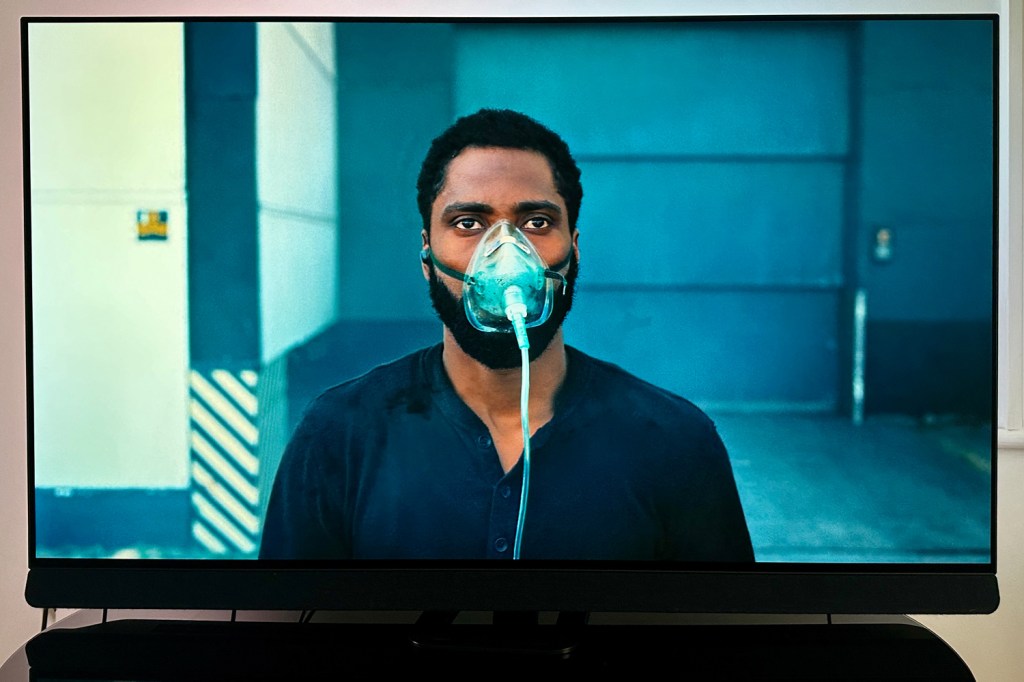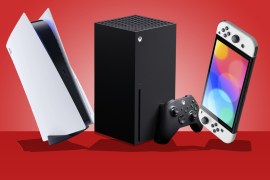Philips 55OLED+908 review: a bright spark
Top-tier picture quality and some of the best sound you'll find on a TV

Stuff Verdict
Bold, bright images, exceptional flatscreen sound and Ambilight illumination make the Philips 55OLED+908 a superlative 4K TV.
Pros
- Bright, high-contrast and higher-detail images, especially from HDR sources
- Bowers & Wilkins sound to shame some quite expensive stand-alone soundbars
- Ambilight is its usual delight
Cons
- Only two HDMI 2.1 ports
- No Freeview Play
- Not any kind of a bargain
There are plenty of very, very decent 4K TVs around just now. I’ve tested models from Panasonic, Sony and more on behalf of this website lately – and I can confirm you really have to go out of your way to buy a bad television. There’s no need to break the bank in order to take possession of a nice 55in screen that will make you very happy indeed. Which makes me wonder, just a little, about the notion of paying pennies less than three grand for the Philips 55OLED+908.
I know Philips isn’t in the habit of slapping on a premium price purely for the sake of it, even for products that are – like this one – a part of their flagship range. So why, exactly, should you consider spending all this money when you know as well as I do that there’s really no need?
Review originally published on 15 December 2023
How we test TVs
Every TV reviewed on Stuff is put through its paces with a mix of film, TV and game content, using a combination of streaming services, Blu-ray and console games. We use our years of testing experience to judge picture and sound quality, ease of use, and value for money. Manufacturers have no visibility on reviews before they appear online, and we never accept payment to feature products.
Find out more about how we test and rate products.
Design and build: standing not hanging


If you’re trying to work out why the 55OLED+908 costs so much, you won’t find many answers here. Oh, there’s absolutely nothing wrong with the way this TV is screwed together or finished, and there’s nothing wrong with the materials from which it’s made – in fact, they’re quite pleasant and even a little bit tactile. But the 55OLED+908 doesn’t look wildly different to a TV from a credible manufacturer costing half of the money Philips wants for this one.
To be fair, though, if you look hard enough you’ll realise this is a premium product. Its metal bezels are extremely slim, and the metal open-frame stand it sits on looks and feels good too – it’s the only place you’ll find any branding, which is a nonchalant and confident move.
It swivels through 30 degrees, which is very helpful when it comes to positioning your new TV anywhere except on the wall. At 71mm deep it’s far from the slimmest TV around, mind you, so perhaps wall-hanging isn’t such a good idea in the first place.
Features: good better best



Now we’re getting somewhere. Here’s where the 55OLED+908 starts to put some distance between itself and the hordes of £1.5K alternatives you might be considering.
First of all, this Philips uses a micro-lens array panel in conjunction with META brightness booster technology. MLA is a refinement of traditional OLED tech designed to increase the visible brightness of the panel. It does this by deploying literally billions of tiny lenses above the OLED pixels to better focus and direct the light they emit, boosting brightness and increasing the extent of the worthwhile viewing angle at the same time. Then the META booster software analyses brightness on a scene-by-scene basis in order to increase peak brightness – even in those scenes that are very bright to start with. None of this, you won’t be staggered to learn, comes especially cheap.
The panel itself is under the control of the 7th generation of Philips’ P5 AI processor, which is capable of real-time adjustments to all aspects of picture quality – and it takes into account ambient conditions as it does so, thanks to a new light sensor. The 55OLED+908 is compatible with all worthwhile HDR standards, too, up to and including Dolby Vision and HDR10+ dynamic metadata. This is the case with less expensive Philips 4K TVs too, it’s true, but it’s nevertheless a very worthwhile feature when you consider how many manufacturers insist you choose between one or the other.
Another feature that’s common to a lot of Philips TVs but unique to them at the same time is Ambilight. I’ve rhapsodised enough about the effect it can have on your viewing pleasure before now – but it’s nevertheless worth noting that the three-sided Ambilight fitted to the 55OLED+908 will make for a more immersive, more relaxing and bigger-seeming picture than any TV without it is capable of producing. Because if it doesn’t, it’ll be the first Ambilight TV that can’t manage it.
The ongoing collaboration with Bowers & Wilkins is another compelling Philips TV selling point. The two companies have been working together for a while now, and for the 55OLED+908 Bowers & Wilkins has developed a 3.1-channel speaker array that’s integrated seamlessly into the frame of the television. The fabric-covered enclosure that runs the length of the bottom of the screen houses left, right, and centre channels, each consisting of a pair of 30mm midrange drivers flanking a 19mm titanium dome tweeter. On the rear of the chassis, meanwhile, there’s a carefully isolated 75mm subwoofer reinforced by a couple of passive bass radiators. The entire system is driven by a total of 80 watts of power.
Elsewhere, the 55OLED+908 is a combination of the ‘only to be expected’, the ‘pleasantly surprising’ and, in one instance, the ‘mildly disappointing’.
In the first category I’m including its four HDMI inputs, twin TV tuners, three USB slots, Ethernet socket and digital optical output. Dual-band wi-fi and Bluetooth 5.2 come under ‘only to be expected’, too. ‘Mildly disappointing’ consists solely of the fact that just two of those four HDMI inputs are at full-on HDMI 2.1 48Gbps standard – and one of them takes care of eARC responsibilities too. It’s doubly disappointing, really, because in other respects the 55OLED+908 is shaping up to be a very capable gaming monitor indeed.
‘Pleasantly surprising’ features include the fact that Dolby Vision gaming is catered for, with full 4K@120Hz support, as well as the more usual FreeSync Premium, G-Sync and HGiG compatibility. Input lag is a very decent 12.5m/s for 4K@60Hz and lightning-fast 4.5m/s for 4K@120Hz.
Interface: Google it


The Philips 55OLED+908 uses Google TV as its smart TV interface , which in many ways is a decisive step up from the Android TV alternative the company had been persevering with previously. It’s a logical, reasonably clean interface (albeit one that hogs the entire screen) with plenty of content available – but with one glaring exception. There’s no Freeview Play support here, which means there are no UK TV catch-up services (except for My5, which in some ways is worse than having none at all). Philips hopes a fix for this will be found early in 2024, but for now you’ll have to make other arrangements if you want to watch iPlayer etc.
Navigating Google TV (as well as some set-up menus that are marginally more friendly, and marginally less labyrinthine, than is the established Philips norm) is done using a nice new design of remote control handset. It’s a metal-bodied clicker with USB-C charging, some backlighting and an ‘up/down/left/right’ pad that’s a fair bit more positive in its action in the ‘up/down’ plane than it is the ‘left/right’. It’s nicely weighted, pleasant to use and one of the better examples of its type currently around.
It has a mic button, of course, because this is a Google TV and therefore has Google Assistant built in. Don’t worry if that’s not how you roll, though – the OLED+908 also works with Alexa if you’ve an appropriate smart speaker on a common network.
Performance



It’s important not to make assumptions when a new television arrives, of course – but to say I wasn’t expecting good things from the 55OLED+908 even before it was out of its packaging wouldn’t be entirely true. Happily, this Philips TV is every bit as impressive as I had hoped/imagined/expected it would be.
Unsurprisingly, it’s at its best when given the best stuff to work with. A UHD 4K Blu-ray of Christopher Nolan’s Tenet, a Dolby Vision and Dolby Atmos-assisted Netflix stream of Leave the World Behind, a Playstation 5 copy of Rainbow Six Siege… put high-end content in, get extremely accomplished images and sound out.
Anyone who’s familiar with the more usual OLED TV performance is going to be startled (at the very least) by just how bright this MLA- and META-assisted panel is. The brightest white tones are very white indeed, but they don’t sacrifice anything in the way of nuance or detail – and when you combine them with the usual black levels that OLED TVs are capable of, it follows that contrasts are impressively wide. Black-tone detail is just as comprehensive as white-tone stuff, too – so not only do blacks and white coexist quite happily, they’re loaded with information as they do so.
In between those two extremes, the Philips is a vibrant-but-controlled watch where colours are concerned. Its ability to extract and contextualise the nuance of tone and shade is outstanding – it does particularly notable work where skin-tones are concerned, making the subtleties of complexion and texture readily apparent. There are a number of different HDR picture modes available quite near the top of the set-up menus, but not one of them – not even the dreaded ‘Filmmaker’ mode – is able to make the 55OLED+908’s colour palette anything less than convincing.
There’s great depth of field to images, too, and a very assured way with edge-definition. Even tight, intricate patterns can’t alarm the Philips, not even if they’re combined with textures – clothing material, for example. The 55OLED+908 simply grips on tight and maintains stability even in the most complex scenes. And it’s a similar story where motion control is concerned – even the most testing on-screen motion (such as televised sport, which combines big areas of almost-but-not-quite colour uniformity with unpredictable, quite often opposing and/or multi-directional motion) is handled confidently.
It’s possible to provoke the Philips, of course, but you have to set your mind to it. When it comes to upscaling Full HD 1080p content it’s extremely assured – there are drop-offs in detail levels, colour fidelity and edge-definition, sure, and a mild-but-definite softening of the overall image, but they’re basically negligible. It’s only when you step down from there, in terms of content resolution, that the 55OLED+908 starts to let you know how hard it’s working – motion-control, especially, becomes a little more hit-and-miss. I don’t doubt that Philips would respond to this observation by asking why on Earth you’re spending this sort of money to watch antique content – which is a tricky question to answer with any conviction.
All of this good work is assisted no end by the three-sided Ambilight. As per usual, it does remarkable work in offering a bias light, making the viewing experience simultaneously more restful and more immersive, and making your 55in screen look appreciably bigger than 55 inches. It remains a significant and worthwhile point of difference for the Philips TV brand.
And that’s just as true of the sound the Philips makes. Bowers & Wilkins, it hardly needs stating, is no mug when it comes to audio quality – and the 55OLED+908 is one of the very few TVs at any price that isn’t crying out for an audio upgrade. The sound delivered from the integrated system here is punchy, expansive, and just as detailed as the images it accompanies. There are plenty of reviews of soundbars here – and when you research them, it’s safe to say that this audio system adds many hundreds of pounds to the value of the 55OLED+908.
Philips 55OLED+908 verdict

On the face of it, the Philips 55OLED+908 has no good reason to cost as much as it does. But then you delve a little deeper into its specification, and the price starts to make a bit more sense.
Once you see (and hear) it in action, it all becomes perfectly clear. For superlative sound without extra hardware, no rival comes close.
Stuff Says…
Bold, bright images + exceptional flatscreen sound + Ambilight = OLED+
Pros
Bright, high-contrast and higher-detail images, especially from HDR sources
Bowers & Wilkins sound to shame some quite expensive stand-alone soundbars
Ambilight is its usual delight
Cons
Only two HDMI 2.1 ports
No Freeview Play
Not any kind of a bargain
Philips 55OLED+908 technical specifications
| Screen size | 55in (version tested), 65in, 77in |
| Resolution | 3840×2160, 120Hz |
| HDR formats | Dolby Vision, HDR10+, HLG |
| Inputs | 2x HDMI 2.1, 2x HDMI 2.0, 3x USB, digital optical audio, CI+, Ethernet, Wi-Fi, Bluetooth |
| Smart TV OS | Google TV |
| Dimensions | 1444x869x71mm, 25kg (panel only), 1444x891x290mm, 28.3kg (with stand) |



